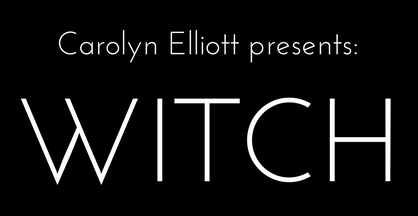by Andrei Burke
Terence McKenna once said that if you don’t have a plan then you become part of someone else’s plan.
The predominance of college, military and prison in America is evidence enough that McKenna’s sage caution is still at large.
And for creatives trying to make a livelihood doing what they love, it can feel like paddling upstream when trying to follow your own course and not get sucked into the corporate workforce.
But with the advances taking place in the online marketplace over the last few years, creatives are being given more time, freedom and mobility with how they choose to make their livelihood through their own self expression.
However, as the marketplace grows by the day, creatives are more hard pressed to express themselves in such a way that they will stand out from the herd.
Social media has allowed artists and makers to reach a magnitudinal audience that a decade ago they would have only dreamed of, but this comes with the risk of your personal vision being watered down as it is forced to fit within the confines of native content.
While Facebook and Instagram allow you to connect with your audience, you run the risk of just becoming another social media user in the cutthroat world of the content hustle.
The hustle of the creative entrepreneur puts a new spin on McKenna’s dictum. Now, it seems that if you don’t have your own brand then you become part of someone else’s brand.
Sage Counsel
This is where Trista Dedmon enters the story. Trista is the kind of soul who arrives in your life when the planets have aligned, you’ve listened to your guides, and you’ve followed your True Will to initiate real growth and development.
She is the Dark Haired (or Trista’s case, lavender haired) girl of a Philip K. Dick novel, who shows up at just the right time to tell you that you are living in a hologram and exactly how you can use that to your benefit.
A meeting with Trista will ensure that you do not succumb to the entropy of the Black Iron Prison (i.e. a boring job in the corporate world,becoming a part of somebody else’s plan) and instead thrive in the true gnosis of your creative livelihood.
“I’m all about helping people not work at jobs they hate,” Trista declares with a dreamy lackadaisical confidence in her voice unheard since the mid-90s. “I consider myself a deep-thinking creative weirdo. I’m weird and this is how I make money doing it.”
Trista has made her livelihood helping other deep-thinking creative weirdos escape from jobs they hate and make money doing what they love using a method that she calls Collaborative Synergy.
She considers herself to be an excavator, digging deeply to discover hidden artifacts that allow her clients to construct a rich narrative of who they are. Like a true detective, she helps you piece together the mystery of who you really are and why that matters.
Alternately, she likens herself an alchemist, taking the base materials of her clients’ self-image and transmuting it into a rich and golden effulgence.
Trista entered my life via an astrology service facilitated by my girlfriend — a remarkable solopreneur herself — Aeolian Heart Readings.
It was perfect timing: the day job was becoming more of a harness than help, and I have been more than itching to live the millennial dream of making a name for myself online and retiring at the wise old age of 29.
After spending weeks deeply connecting with Trista through regular emails, phone calls and Skype sessions, I learned that I needed to quit my job in order for things to really start happening in my life.
You need to make space to develop your creative talents in order for them to become your livelihood. Slaving away at a job you hate to barely make ends meet is a surefire way to kill the Muse.
I also learned that the 4 Hour Workweek promise of retiring early and living anywhere in the world is complete bullshit. It is to the millennial what the American Dream’s promise of owning your own home with a fail-safe retirement plan was to the Boomer nearly 50 years earlier: a brilliant marketing campaign designed to get you to buy into someone else’s dream.
If you want to make a livelihood for yourself online, then you need to work for it. But you cannot kill yourself working in the process — after all, that’s why we want to leave our boring jobs. It’s a fine balance of work and play, business and pleasure, and putting yourself out there while keeping it all together.
Below, I’ve compiled some of the most resonating lessons I’ve learned from my time speaking with Trista.
1. Know Yourself
Self-knowledge is the single greatest asset that a creative entrepreneur can possess.
“What ends up happening in your first year of trying to do this,” Trista says about branding yourself as a creative entrepreneur, “you really don’t know what you are, how you stand out or what your real direction is.
It’s almost impossible. You can start with some ideas, but there’s always going to be an evolution, you’re always going to end up somewhere else. When you first start out, you’re taking in all the information you can find because you’re learning.
That’s natural and what we do when we begin any new phase in life: you absorb all the information that’s out there before you start creating your own filters.
“But I see happening with a lot of people is that they get swept up in [absorbing information] and they lose a sense of self, they lose a sense ofwho they are and how to differentiate themselves. You end up becoming a copy of a copy of a copy, going with the crowd and setting yourself up for not being successful.”
She recommends a routine of regular meditation along with a divinatory system such as Tarot or astrology as a means for radical self-discovery.
She advises creatives to keep a journal “like no one will ever read.”
Shadow work is a method she has found particularly useful for self-discovery.
“[Shadow work allows] me to simultaneously unearth and integrate things about me that I did not want to be part of my character” I could tell that I was being held back by certain aspects of myself that I didn’t like, so I spend a lot of time exploring those dark truths about myself that make me uncomfortable or cause fear-based reactions.”
2. Get Off of Social Media
It’s a truly revolutionary concept, but minimizing your presence on social media is a major step in remembering who you are and having a distinct brand as a creative entrepreneur.
“I’ve removed myself from most social media for the time being,” she says. “I don’t keep up a blog post once a week anymore. I don’t write to my email list a ton. Only when it’s worthwhile, it’s beneficial, and I have something to say.”
It’s as easy to forget yourself in the constant hustle of social media as it is to get your wallet pickpocketed in Grand Central Station. Social media is as valuable of a way of getting yourself around as the NYC subway, but if you lack situational awareness of your surroundings you are likely to end up scammed, mugged and beaten.
Adherence to self-knowledge gives the creative entrepreneur the situational awareness and self-defense techniques to successfully navigate the online marketplace with a distinct brand voice. It requires that you rise above the posting-for-posting’s sake mindset that dominates most social media marketing theories.
Post on social media or write to your mailing list only when you have something worthwhile to say. In order to find worth in what you say, you must find worth in yourself.
“I’m a self-analyst,” Trista explains. “I learn about myself. I experiment, I explore, I learn. I go really deep with that. I basically live my life [like that]. I don’t see a lot whole lot of difference in the work I do for people — my career or business or whatever you want to call it — and how I live my life as well.”
3. There is a Difference Between Business and Livelihood
In building your personal brand as a creative entrepreneur, it is better to think of yourself as creating a livelihood than starting a business.
“Business can have a negative connotation with creatives. We do ourselves an injustice because we don’t want to profit from our creativity or become what the Man wants us to be — what we’ve been working to get away from.
The fact that we think about our creativity as a way to make money, and we call that a ‘business,’ creates an unnecessary duality between our lives and the work that we do. There shouldn’t be a separation between the two.”
What ends up happening in this first stage of breaking away, freelancing and being our own bosses is that we get stuck in the framework of separatingwork from home. When you think in terms of business rather than livelihood, you reinforce that polarizing framework of worklife and homelife.
The business framework requires a balance between worklife and homelife. When you are creating a livelihood, however, worklife and homelife need to be integrated. A creative livelihood is the skillful integration of worklife and homelife: each side feeding the other like the dancing fish of the Taoist yin and yang.
Life evolves, and a livelihood will adapt to the conditions of your life.
4. Know When To Get Away From Your Work
Part of turning your creative work into a livelihood is the ability to know when to get away from your work.
We have been shamed and made to feel guilty by a Protestant society not working at 3pm. But if your heart is not in your work with your mind wandering, and you stop and get away from it by reading a book or going on a hike, your work will be enriched when you return to it.
“This is how I live daily,” Trista declares. “If I notice my mind is just not in it, I need to go do something else. I need to read, I need to get out into nature, I need to reconnect with source energy. That’s going to fuel [my work]. When I come back to it, that’s going to enrich my work and make it so much more multi-faceted.”
5. Balance Input and Output
To maintain a healthy equilibrium of creative flow, it is necessary to consume as much as we produce.
“We’re not cogs in a wheel,” Trista says, “We’re not machines. But even in the online business world, you have a guilt mentality of everyone trying to out-hustle each other. I think that is incredibly disgusting and detrimental to creative people. Anyone will tell you that creation comes from taking in information, taking in different stimuli.”
Maintain a solid connection with your passions and desires, that which inspired you to create in the first place. Be ceaseless in your consumption of art, literature, film, music — and listen, watch and read deeply into what this precious inspiration is telling you. Never lose sight of your passions.
“Your passions end up fueling what you do as your livelihood,” Trista says.
6. Ditch the Hustle
“I hate it,” Trista says, vehemently rebuking the ubiquitous hustle of the online marketplace.
“It’s like a popularity contest,” she continues. “It’s this weird one-upping, like creating another rat race. And that’s what we were trying to get away from in the first place.
It’s terrible to make people think that this is the only way to do it as an entrepreneur. Because you’re going to burn out, just like you did at your job. Except that you created it yourself — and that’s even more of a mindfuck because you did it to yourself.”
As she writes in her thought-provoking article “Let’s Just Be: A Manifesto For the Creative Class” (essential reading for all creatives):
I’m sick of the glorification surrounding “the hustle.” Just a quick look through Instagram or Twitter has you breaking out in hives because it looks like everyone is trying to one-up each other with a “hustle all day, every day” mentality. We got into this in the first place so we wouldn’t have to work like slaves and so we could actually enjoy our lives. Giving it all you have in productive bursts and then stopping when you need to is not weak-willed, it’s enlightened.
Think about that last job you had (or still have). What did you hate about it? I bet one of the aspects you couldn’t stand is that you had to pull long hours for tasks that didn’t contribute to real growth. Don’t repeat those same patterns with your own business. Filling time you think you should be working with an endless list of to-dos or tasks may seem important, but in the end, busy work isn’t going to contribute to your brand and business’ real growth.
Amen.
Collaborative Synergy
Since speaking with Trista, I have quit my job and, with her help, I am starting my own business as a creative entrepreneur.
The transition has been terrifying — but no less terrifying than the prospect of commuting two hours every day to a job that I hate with shitty pay and no room for growth. Working with Trista has helped me remember who I am, and this perhaps is the greatest lesson of personal branding.
Personal branding is a process of remembering who you are, not forcing yourself to be who you think that social media wants you to be. It is not about moving units off the shelves but moving people to follow your example.
It is not only essential for creative entrepreneurs who wish to build their business with a unique touch, but anyone who desires to recover their True Self from the trash pile of social media information overload contaminating reality with digital delusions.
Decondition the mind from the morass of learned behaviors and informed opinions instilled by society and media. Integrate the persona with the shadow to catalyze the True Self. Rebuild yourself with a unique touch, and speak the Truth in your distinct voice. Such is the power of personal branding.
It is the ultimate outcome of Collaborative Synergy, and there are few finer for the job than Trista.
You can hire Trista Dedmon to help you transition into your creative livelihood by clicking here.
About the Author:
 Andrei Burke
Andrei Burke
Writer of copy.
Marketer of content.
Builder of brands.
andreiburke.com
[images are originals by Trista Dedmon, they are used with her permission]












Show Comments (0)